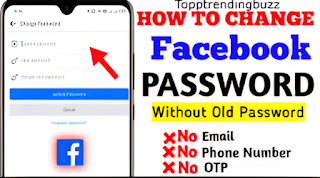Facebook Password Reset: Quick Fix for Forgotten Logins
In our increasingly digital lives, managing numerous online accounts and their corresponding passwords can be a daunting task. It’s incredibly common to find yourself locked out of your Facebook account simply because you’ve forgotten your login credentials. Whether it’s been a while since your last login, or you’ve adopted a new, more complex password strategy, a forgotten password can halt your social interactions and access to vital information. Fortunately, Facebook has streamlined its password reset process, making it a relatively quick and secure fix for regaining access. This comprehensive guide will walk you through the essential steps for resetting your Facebook password in 2025, ensuring you can get back online with minimal hassle and enhanced security.
In This Article, You Will Find:
Quick Reset Checklist:
- Access: Go to facebook.com/login/identify.
- Identify: Use your email, phone, or username.
- Verify: Choose email or SMS for a code.
- New Password: Create a strong, unique one.
- Stay Secure: Always enable 2FA!
(Remember: Official Facebook channels are always the safest for password resets.)
Why Passwords Are So Easily Forgotten
The digital landscape demands that we create and remember an ever-growing number of passwords. This sheer volume is a primary reason why Facebook passwords, despite being frequently used, can slip our minds. Many users opt for highly complex passwords to enhance security, which, while beneficial, can also make them harder to recall. Infrequent logins, especially if you primarily access Facebook through a mobile app that keeps you logged in, mean you rarely need to type your password, leading to its gradual erosion from memory. Furthermore, password fatigue often leads individuals to reuse passwords across multiple sites, increasing security risks and making it difficult to remember which specific variation was used for Facebook. Understanding these common pitfalls can help you prepare for, and prevent, future forgotten login scenarios.
The Official Facebook Password Reset Process
Facebook's password reset mechanism is designed to be user-friendly and secure. The entire process is initiated from a single, dedicated page. It is crucial to always use the official Facebook website or app for this process to protect yourself from phishing attempts. Never click on suspicious links in emails or messages that claim to be from Facebook.
1. Navigating to the "Forgot Password" Page
To begin, open your web browser or Facebook app and go to the Facebook login page. Instead of entering your credentials, look for the **"Forgot password?"** link, typically located below the password input field. Clicking this will redirect you to the official account identification page: facebook.com/login/identify. This is the secure portal where you will start your recovery journey.
2. Identifying Your Account
On the identification page, Facebook will prompt you to enter information that helps it pinpoint your account. The most common methods include providing the **email address** or **mobile phone number** you used when signing up or that you've associated with your account. If you no longer have access to these, you can often search by your **full name** or Facebook username. When searching by name, Facebook might ask for additional details, such as a friend's name or your city, to help differentiate your account from others. Accuracy is key here; providing precise information will expedite the process and ensure you are attempting to reset the correct account's password.
3. Choosing a Verification Method
Once your account is identified, Facebook will present you with options to verify your identity. These options are based on the contact information you have linked to your account. You will typically see choices to receive a password reset code via:
- Email: A code will be sent to your primary or any verified email address associated with your account.
- SMS (Text Message): A code will be sent to your verified mobile phone number.
- Trusted Contacts: If you have previously set up this security feature, you can enlist the help of 3-5 trusted friends to provide you with codes.
4. Entering the Verification Code and Setting a New Password
After selecting your preferred verification method, Facebook will send a unique, time-sensitive code to your chosen email or phone. Retrieve this code and enter it into the designated field on the Facebook password reset page. It's crucial to do this promptly, as these codes expire after a short period for security reasons. Once the code is successfully verified, you will be directed to a page where you can **create a new password**. This is your opportunity to establish a strong, unique, and memorable password that you haven't used before for any other service. A robust password should combine uppercase and lowercase letters, numbers, and special characters, and ideally be at least 12-16 characters long. After setting your new password, you should be able to log in to your Facebook account immediately. For added security, Facebook may offer an option to log out of all other active sessions, which is highly recommended if you suspect unauthorized access.
Advanced Troubleshooting for Password Resets
While the standard reset process is usually effective, you might encounter specific challenges. If you're not receiving the verification code, first, double-check the email address or phone number you entered for any typos. For email, ensure you check your spam or junk folders. For SMS, confirm your mobile service is active and you have good signal. Sometimes, a brief delay in delivery can occur, so waiting a few minutes before requesting a new code can help. If you have absolutely no access to any of the recovery options listed, Facebook's system will guide you to a more complex recovery path. This often involves submitting a government-issued ID to verify your identity or answering detailed security questions based on your account's history. This process is designed to be thorough to protect your account from fraudulent access, so patience is key. In cases where you suspect your account might be compromised or hacked, Facebook has a dedicated "Hacked Accounts" section in their Help Center that provides specialized steps beyond a simple password reset.
Best Practices for Password Management (Prevention)
To avoid future password troubles and enhance your overall online security, adopt these best practices:
- Use a Password Manager: Tools like LastPass, 1Password, or Bitwarden can securely store, generate, and autofill complex, unique passwords for all your accounts, eliminating the need to remember them.
- Enable Two-Factor Authentication (2FA): This is a critical security layer. Even if someone obtains your password, they cannot access your account without the second factor (a code from your phone or authenticator app).
- Keep Contact Information Updated: Ensure your primary email address and phone number on Facebook are always current and accessible. Add backup email addresses or phone numbers for additional recovery options.
- Set Up Trusted Contacts: Designate a few highly trustworthy friends or family members who can help you regain access if you're locked out and can't use your primary recovery methods.
- Regularly Review Active Sessions: Periodically check your "Security and Login" settings on Facebook to review where you're logged in. End any sessions on devices you don't recognize or no longer use.
- Be Wary of Phishing Scams: Never click on suspicious links in emails or messages that ask for your password. Always navigate directly to Facebook's official website for login or password changes.
Conclusion: Quick Fixes and Proactive Security
Forgetting your Facebook password is a common inconvenience, but thankfully, it's a problem with a quick and secure solution. By following Facebook's official password reset process, utilizing your linked email or phone number, and creating a strong new password, you can regain access to your account swiftly. More importantly, by adopting proactive security measures such as enabling Two-Factor Authentication, using a password manager, and keeping your recovery information updated, you can significantly fortify your Facebook account against future lockouts and unauthorized access. Staying informed and vigilant about your online security habits ensures that your digital presence remains both accessible and protected, allowing you to connect and share with peace of mind.


.png)

.png)







0 Comments